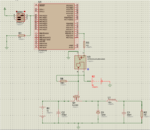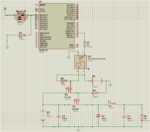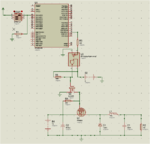Magdy_said
Newbie level 6
i was making a simple buck converter using an AVR as a controller and 6n137 optocoupler as a highspeed isolator
datasheet : https://pdf1.alldatasheet.com/datasheet-pdf/view/30862/TOSHIBA/6N137.html
and in last minute after i bought the chip just discovered that the output voltage is only 5 volts and i need 10 volts to drive the mosfet irf3205, if i drived it with Vgs = 5v the R on will be so high (i think) and there will be more losses in the converter so i decided to add another irf 3205 but i am not sure of what i am doing. can you help me and give it a check?
first design :

second design :

- - - Updated - - -
edit : i just realized that Vgs on n fet won't be enough so if replaced Q1 in first design with a p channel mosfet and lowered the 1 k resistor to around 500 to optimize the time constant, it should work perfectly right?
datasheet : https://pdf1.alldatasheet.com/datasheet-pdf/view/30862/TOSHIBA/6N137.html
and in last minute after i bought the chip just discovered that the output voltage is only 5 volts and i need 10 volts to drive the mosfet irf3205, if i drived it with Vgs = 5v the R on will be so high (i think) and there will be more losses in the converter so i decided to add another irf 3205 but i am not sure of what i am doing. can you help me and give it a check?
first design :

second design :

- - - Updated - - -
edit : i just realized that Vgs on n fet won't be enough so if replaced Q1 in first design with a p channel mosfet and lowered the 1 k resistor to around 500 to optimize the time constant, it should work perfectly right?
